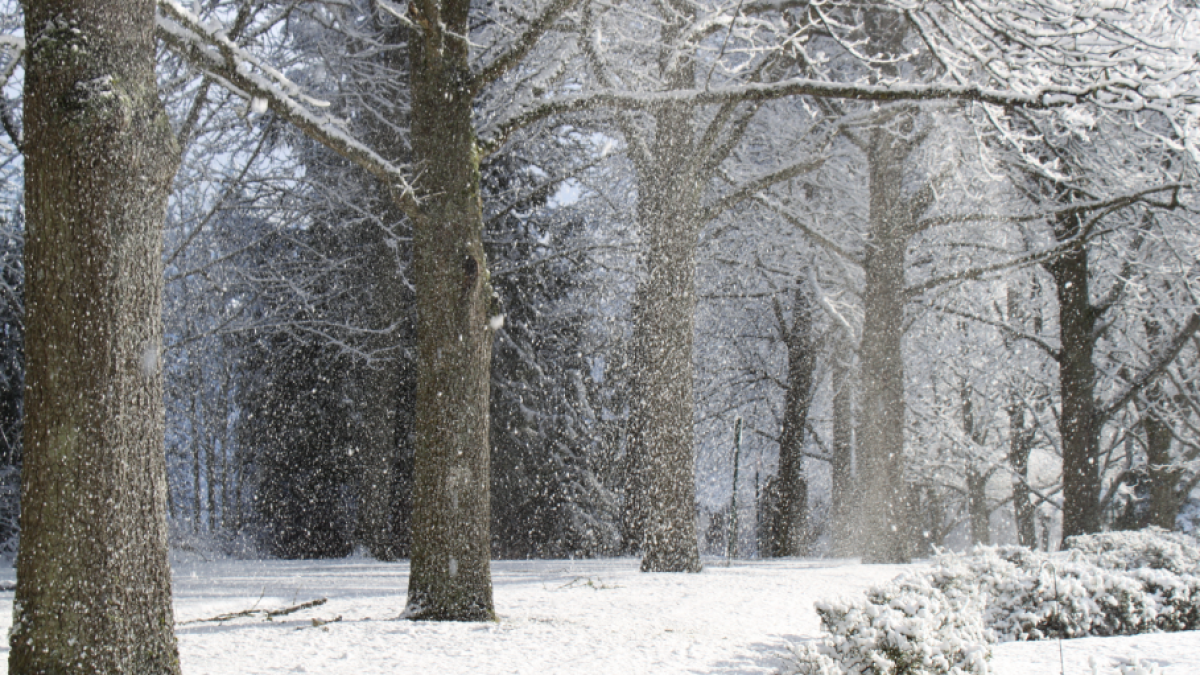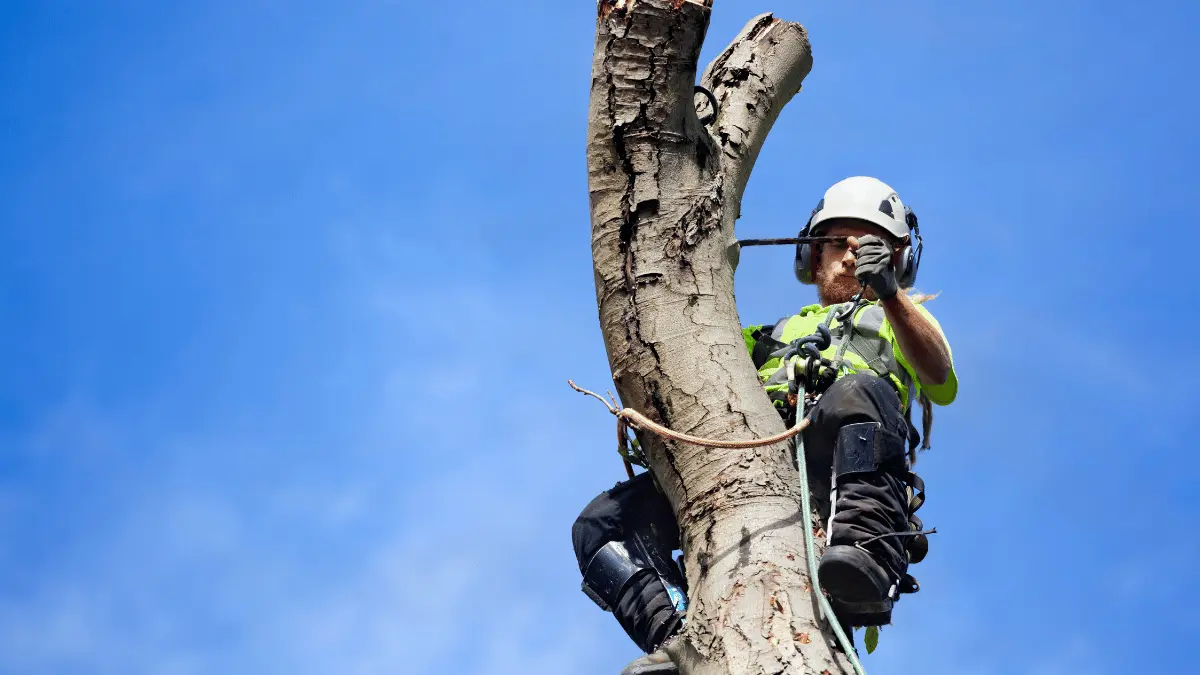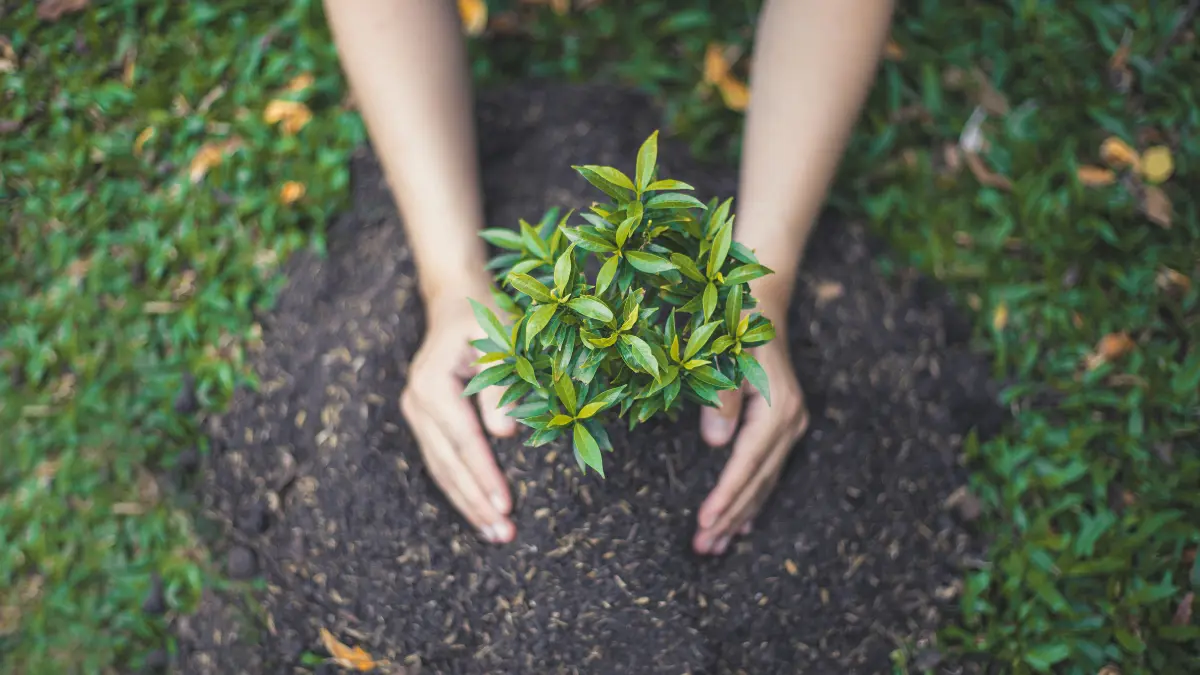Winter is clearly approaching when the brilliant fall foliage fades and the freezing winds start to blow across Binghamton, New York. This change in the seasons serves as a reminder for winter tree care. Tree preparation for the next colder months is essential to their continued health, safety, and resilience. Binghamton’s winters can be very severe, with snow, frost, ice, and freezing temperatures that can damage your landscaping.
Preparing trees for winter in Binghamton, NY, is crucial, whether you have large trees that shade your house or ornamental trees in your garden. In this blog, we’ll walk through the basics of preparing trees for winter in Binghamton, NY, covering everything from tree pruning and tree preparation Binghamton to practical frost protection and other smart winter tree maintenance tips Binghamton homeowners should follow.

The Importance of Winter Tree Care in Binghamton, New York
Binghamton experiences long, snowy, and bitterly cold winters. Trees, particularly young or weaker ones, are under a lot of stress from these climatic circumstances. Trees that take preventative measures now are more likely to survive the season and flourish in the spring.
Here are some reasons why Binghamton tree preparation is a smart choice
Reduced snow and ice damage: Snow buildup and frozen branches can cause serious breaks.
- Better disease resistance: Trees that receive regular care are more resilient to diseases and pests.
- Quicker recovery in the spring: Trees that receive protection in the winter tend to leaf out more completely and develop more effectively as the temperature rises.
- Safer surroundings: Your loved ones, cars, and property are all at risk from damaged or brittle limbs.
By prioritizing cold-weather tree care, you’re investing in the health of your trees and the safety of everything around them.

1. Examine Your Trees Prior to the Snowfall
Assessing each tree on your property is a smart first step in tree preparedness. Keep an eye out for these warning indicators:
- Dead or dying limbs
- splits in the trunk or bark
- Unusual bending of trees
- Fungi or mushrooms close to the base
- Early leaf drop or oddly colored leaves
Early detection of these issues allows you to take action before winter worsens the situation. Hiring experts who provide winter tree services Binghamton, NY, can help you see issues you might overlook if you don’t know what to look for.
2. Prune for Health and Safety
Pruning is a vital part of cold-weather tree care. When you remove damaged or weak branches, you’re helping the tree stay healthy and reducing the chance of them breaking under snow or ice.
Some tips for effective tree pruning:
- Wait until dormancy: Late fall or early winter, before heavy snow sets in, is ideal.
- Use the right tools: Always prune with clean, sharp tools to reduce the risk of spreading disease.
- Cut dead or broken limbs: These are most likely to snap during storms.
- Don’t overdo it: Avoid removing more than a quarter of the tree’s canopy at once.
Larger trees can be dangerous to prune without proper equipment. In those cases, it’s best to let professionals handle the tree preparation in Binghamton.
3. Protect Tree Roots with Mulch
Mulch is one of the simplest and most efficient ways to get trees ready for winter. This keeps the soil moist, inhibits the growth of weeds that compete with trees, and helps tree insulation.
How to properly mulch:
- Make use of organic resources such as wood chips or bark.
- Cover the base of the tree with a layer of mulch that is 2 to 4 inches thick.
- Mulch should be kept a few inches away from the trunk to prevent decay and moisture accumulation.
When winterizing trees in cooler climates like Binghamton, mulching is especially beneficial for young or recently planted trees.
4. Before winter arrives, give trees a good drink.
Trees still require water before the earth freezes, which may seem strange. They can handle the stress of winter better if they stay hydrated. An essential component of winter tree maintenance is watering the trees properly.
Tips for watering:
- Water trees thoroughly in the fall, particularly if there hasn’t been much rainfall.
- Give priority to young or new trees that haven’t developed strong roots.
- When the Earth is completely frozen, stop watering.
In addition to promoting tree health, this action can stop winter dehydration.
5. Wrap Tree Trunks for Added Protection
Thin-barked trees, such as birch, young maples, or fruit trees, can suffer from sunscald or frost cracking when temperatures fluctuate. Wrapping their trunks is a simple and effective tree protection measure.
Best practices for tree wrapping:
- Choose a breathable wrap like burlap or specialized tree wrap, not plastic.
- Start at the base and go up to the first main branches.
- Don’t wrap too tightly, and remove it in early spring.
This kind of frost protection helps prevent damage that might otherwise harm your trees’ long-term growth.
6. Prevent Hungry Winter Animals
Wildlife, such as deer and rabbits, may nibble on tree bark or buds when food is sparse. One important aspect of Binghamton, NY winter tree care is shielding trees from these creatures.
- To protect your trees, follow these steps:
- Wrap the trunk with mesh wire or plastic tree protectors.
- Apply natural repellents to the tree’s base.
Snow helps animals reach higher branches, so don’t let it accumulate too high close to the trunks.
You may prevent expensive bark damage from winter animals by following these tips.
7. Support Heavy or Weak Limbs
Large limbs of some trees may already be drooping, fractured, or in danger of breaking off. Before winter sets in, you may need to install cables or braces for these support systems.
Experts providing winter tree services Binghamton, NY, are most suited for this type of work, particularly when working with large or tall trees. It’s a precaution that can avert significant harm during a snowfall.
8. Practice Caution When Eliminating Ice or Snow
Brushing snow off your trees may seem like a good idea, but it can backfire if done incorrectly. Here’s how to securely handle it:
- To remove snow from the bottom of branches, use a soft broom.
- The branches may fracture if you attempt to remove the ice with force.
- Steer clear of shaking limbs, particularly if they are fragile and frozen.
Managing snow safely keeps your trees safe from needless harm.
9. Watch the Weather and Stay Ready
Winter in Binghamton can turn extreme quickly. Pay attention to local forecasts and be ready to take last-minute precautions.
Before a major freeze or storm:
- Double-check that your tree wraps and guards are secure.
- Reapply mulch where it’s thinned out.
- Remove any overhanging limbs near your home or driveway.
Staying alert helps you better understand how to protect trees in Binghamton winters.
10. When necessary, contact tree care experts
While certain activities are easy to complete on your own, others call for professional assistance. Consider hiring experts who specialize in winter tree care advice Binghamton if you have big trees or are unsure how to manage particular problems.
They can safely support, trim high branches, and provide accurate assessments. A local specialist will be aware of the unique climate conditions in Binghamton and will help your trees have the best chance of surviving the winter.

FAQs
Why is tree pruning crucial for getting ready for winter?
Pruning trees helps remove broken or feeble branches that could break under the weight of ice or snow. In the winter, it keeps your yard safer and your trees healthier
Do young trees require additional protection during the winter months in Binghamton?
Of course. Young trees require extra protection from frost, chilly winds, and hungry wildlife, such as trunk wrapping, mulch, and guards
Are expert tree care services in Binghamton, New York, worth the money?
Yes, they are. Hiring local professionals ensures proper tree preparation and long-term tree health for large trees or more critical issues.
Call KD Tree Services if you need professional assistance with winter tree care in Binghamton, New York(716) 220-7282. Their knowledgeable staff knows how to maintain your trees safely and healthily throughout the winter, whether that means protecting them, pruning them, or preparing your yard for the season.









